
What Climates and Weather Would Occur Here?
PLANET S is a hypothetical replica of Earth. It has plate tectonics, oceans, and an atmosphere very similar to Earth’s. You will map the climatic zones on this planet, identifying cold and warm ocean currents, prevailing winds, potential locations of rain forests and deserts, places where the climate and topographic setting would be suitable for […]
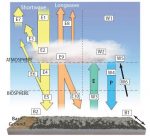
How Does the Climate System Sustain Life?
GLOBAL ENERGY, HYDROLOGIC SYSTEMS, AND BIOLOGIC SYSTEMS are interdependent, linked by processes, like photosynthesis, evapotranspiration, and albedo, through a system of complicated feedbacks. How does the climate stay at conditions favorable for life, despite the fact that it is always changing? Alternatively, can the biosphere help sustain a favorable environment through such self-regulating processes? This […]
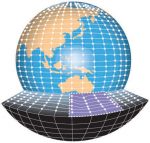
How Do We Use Computers to Study Climate Change?
COMPUTER MODELS are used to investigate issues related to climate, like global warming. The simplest climate models compute energy (temperature), water, or momentum for a small area over a limited time. The most complicated models use numerical methods and principles of physics to compute atmospheric conditions at many vertical levels across the entire Earth, for […]
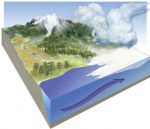
What Are the Consequences of Climate Change?
CLIMATE CHANGE HAS MANY IMPACTS, ranging from obvious ones like an increase in global temperatures, to less obvious ones, such as a possible increase in malaria and other diseases. Some of these consequences are highly probable, whereas others are very speculative. On these pages, we briefly introduce some of the most likely results of climate […]
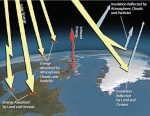
What Factors Influence Climate Change?
CLIMATE CHANGE IS ALWAYS OCCURRING, including global warming since the mid-1800s. There are many natural causes of climate change, including changes in Earth’s orbit around the Sun and changes in sunspot activity. Many scientists propose that human activities, including the burning of fossil fuels and the clearing of forests, also contribute to climate change by […]

What Is the Evidence for Climate Change?
OVER THE LAST 150 YEARS, people have measured atmospheric temperatures. This record, albeit short in geological terms, shows an overall increase in temperatures — global warming. There is currently much scientific and political discussion of this topic. What is the evidence that Earth’s climate is changing? What Is Climate Change? Earth’s climate has been changing […]
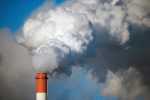
How Does Air Quality Relate to Climate?
AIR POLLUTION consists of gases, liquids, and solids introduced into the atmosphere by human activities and deemed to be detrimental to humans and other creatures, plants, or other aspects of ecosystems. Most air pollution consists of noxious gases and liquids, car exhaust, and smoke and soot from industrial activities and fires. What Is Air Pollution […]
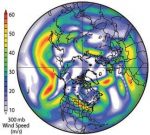
What Causes Subarctic and Polar Climates?
POLAR AND ADJACENT SUBPOLAR CLIMATES occur at very high latitudes in both the Northern and Southern Hemispheres. Climates of polar regions, assigned to Group E in the Koppen system, are extremely cold and are subdivided into Ice Cap (EF) and Tundra climate (ET). Farther from the pole, the Tundra climate gives way to another Group D […]

What Are the Settings of Mid-Latitude Climates?
NON-ARID, MID-LATITUDE CLIMATES tend to experience a relatively even distribution of precipitation year-round. Some are dominated by maritime air masses that moderate temperature swings and result in relatively mild winters and summers; they are within Group C in the Koppen designation. Other mid-latitude climates impart more severe winters because they are dominated by continental air […]
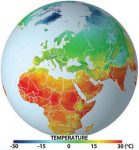
What Causes Warm Temperate Climates?
TEMPERATE MID-LATITUDE CLIMATES, designated as Group C of the Koppen system, experience moderate temperatures and precipitation and so are sites of particularly intense human activity. Some temperate climates are relatively warm, because they occur mostly in subtropical latitudes. These include Humid Subtropical, Mediterranean, and Temperate Monsoon climates. What Is the Spatial Distribution of the Various […]
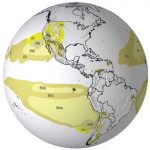
What Conditions Cause Arid Climates?
ARID CLIMATES OCCUPY a greater portion of Earth’s land surface than any other climate category. They comprise Group B in the Koppen classification and are subdivided into desert climates and steppe climates, with the distinction being that deserts are more arid than steppes. Deserts and Steppes are further subclassified into hot or cold categories — […]

What Is the Setting of Tropical Climates?
A-TYPE CLIMATES in the Koppen climatic classification system are “tropical,” having consistently warm temperatures all year. Precipitation in these zones is primarily caused by the convergence of the trade winds along the Intertropical Convergence Zone (ITCZ), which shifts with the season to locations north and south of the equator. There are three types of A […]

What Are the Most Common Climate Types?
EACH TYPE OF CLIMATE, as defined by the Koppen climate classification, has specific characteristics that distinguish it from any other climate type. Once a climate is assigned to one of the five main groups (A–E), it is then categorized by factors such as whether most precipitation falls in the summer, winter, throughout the year, or […]

Where Are Different Climate Types Located?
THE KOPPEN CLIMATE CLASSIFICATION was defined for land areas and generally is depicted as a map covering a large area and portraying the regional or global distributions of different climate types. The map on these two pages covers the entire planet and is an Extended Koppen Classification, because we have extended the land-defined Koppen classification […]
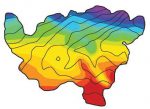
How Do We Classify Climates?
CLASSIFICATION IS THE PROCESS of grouping similar items together and separating dissimilar items. Items that are similar in some ways can be different in others, and items that are in different groups can have certain similarities. Classifications allow us to examine general patterns, with the caveat that interpretations derived from classified groups are best done […]

Climates Around the World
CLIMATE IS THE LONG-TERM PATTERN of weather at a place, including not just the average condition but also the variability and extremes of weather. It largely reflects an area's geographic setting, especially latitude, elevation, and position relative to the ocean. Climate is also influenced by atmospheric pressure and moisture, prevailing and seasonal wind directions, and […]
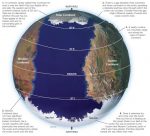
What Oceanic and Atmospheric Patterns Are Predicted for a Newly Discovered Planet?
PLANET W is a newly discovered planet that is similar to Earth. It has oceans, an atmosphere very similar to Earth's, and ice at both poles. Since no astronaut has yet ventured to the planet, we currently only know things we can observe from a distance, specifically the physical geography — the distribution of land, […]

What Influences Climates Near the Southern Isthmus of Central America?
THE SOUTHERN ISTHMUS OF CENTRAL AMERICA is geographically and climatically one of the most interesting places in the world. It is a narrow strip of land that connects Central America and South America and that separates very different waters of the Pacific and Atlantic Oceans. The climate of the region reflects intricately changing wind patterns […]

Do Other Oceans Display Oscillations?
ENSO REMAINS THE GREATEST CAUSE of climatic variability on a global scale, but oscillations have been identified in other ocean basins and shown to have regional impacts. Whether these phenomena are linked or “coupled” with ENSO is still debated, but they may be responsible for long-term variations in our climate. One such oscillation occurs in […]

How Does an El Niño Start and Stop?
THE ENSO PHASES, EL NINO AND LA NINA, have profound impacts throughout the Pacific basin and neighboring continents. What begins as a local adjustment in sea level and depth of the thermocline in the western Pacific can spread across the equatorial Pacific, triggering an El Nino. Once established, an El Nino directly impacts weather in […]

Do Impacts of ENSO Reach Beyond the Tropics?
WHILE THE IMMEDIATE IMPACTS OF ENSO are restricted to regions near the equatorial Pacific, shifts between different phases of ENSO cause climate variability well beyond the equator and the Pacific. When atmospheric conditions in one region affect a distant region, these distant associations are called teleconnections, which in this case are caused by interactions with […]

What Are the Phases of ENSO?
THE ATMOSPHERE OCEAN SYSTEM in the equatorial Pacific is constantly changing. Although each year has its own unique characteristics, certain atmosphere-ocean patterns repeat, displaying a limited number of modes. We can use surface-water temperatures in the eastern equatorial Pacific to designate conditions as one of three phases of the El Nino-Southern Oscillation (ENSO) system — […]
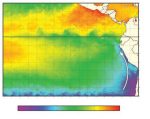
What Are El Niño and the Southern Oscillation?
THE MOST WELL KNOWN AND PUBLICIZED cause of climate variability, floods, droughts, hurricanes, heatwaves, and landslides is a change in the strength of winds and ocean currents west of South America in what has become known as El Nino. El Nino is one expression of the ocean-atmosphere system operating over and within the equatorial Pacific […]

What Connects Equatorial Atmospheric and Oceanic Circulation?
EQUATORIAL AND TROPICAL REGIONS are areas of greatest excess energy. The interaction of ocean and atmosphere systems there have great implications for climate and its variability in other parts of the world. In the same way that the Hadley cells establish connections between latitudes, there are large-scale, east-west connections within the equatorial atmosphere-ocean system. These […]

How Are the Atmosphere, Oceans, and Cryosphere Coupled?
THE SURFACE OF THE OCEANS marks the boundary between Earth’s major systems — oceans and atmosphere. Both systems move mass and energy laterally and vertically, primarily in response to variations in density and to the equator-to-pole energy gradient. Deep-flowing abyssal waters are generally cooler and denser than surface waters, but they rise in some places […]

What Processes Affect Ocean Temperature and Salinity in Tropical and Polar Regions?
THE EXTREMES IN SEAWATER TEMPERATURE AND SALINITY occur at high and low latitudes. The warmest and most saline waters occur in the tropics and subtropics, while very cold, less saline waters occur near the poles, away from where ice is actively forming. Here, we examine the processes occurring in some of the warmest and coldest […]
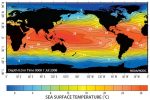
What Are the Global Patterns of Temperature and Salinity?
THE OCEANS VARY IN SALINITY from place to place and with depth. Spatial variations are due to differences in the amount of evaporation and formation of ice, which increase salinity, versus the amount of precipitation, input from streams, and melting of ice, all of which add fresh water that dilutes the salinity. Also, saline waters […]

What Causes Water to Rise or Sink?
MOVEMENT WITHIN THE OCEANS arises from other factors in addition to shearing induced by the wind. Such factors include variations in the density of water in response to changes in its temperature and salinity. Changes in temperature and salinity occur from flows of fresh water into and out of the oceans as a result of […]
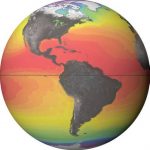
How Do Sea-Surface Temperatures Vary from Place to Place and Season to Season?
SEA-SURFACE TEMPERATURES (SST) VARY GREATLY, from bathwater warm to slightly below freezing. Early data on SST were collected from ships, but since the 1970s, satellites have collected voluminous SST data, documenting variations in temperature from region to region, season to season, and decade to decade. SST data have become even more important as climatologists investigate […]

What Is the Global Pattern of Surface Currents?
CONCEPTUAL MODELS OF REALITY, like the pole-to-pole ocean on the previous page, help us to draw general conclusions about the operation of physical processes. They also serve to highlight locations, or physical conditions under which the simplified overriding ideas prove inadequate in explaining observed phenomena. The global figure below depicts a summary of major surface […]

What Causes Ocean Currents?
SURFACE WATER OF THE OCEANS circulates in huge currents that generally carry warmer water toward the poles and colder water toward the equator. Extremely large quantities of energy are stored in the uppermost 100 meters of the global oceans, and surface ocean currents redistribute this energy from one part of the ocean to another, carrying […]
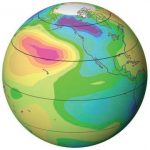
Atmosphere-Ocean-Cryosphere Interactions
OVER 70% OF THE PLANET'S surface is covered by oceans, which exchange energy and moisture with the overlying atmosphere. Oceans move in response to three main factors — winds moving over the top of them, spatial variations in the density of water, and the Coriolis effect. In addition to responding to wind directions, oceans in […]

Where Would You Expect Severe Weather?
YOU ARE A METEOROLOGIST at the National Weather Service and are responsible for providing an overview of weather conditions across the U.S. To do this, you will study maps showing weather conditions at the surface and aloft and then determine where and how different air masses are interacting. In addition, you will identify areas where […]
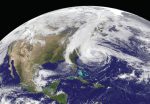
What Happened During Hurricane Sandy?
SEVERE STORMS are extremely dangerous, capable of killing thousands of people and inflicting incomprehensible damage. Severe weather — and the more benign varieties — develop, operate, move, and dissipate according to fundamental principles presented in this chapter. Here, we examine Hurricane Sandy, which in 2012 tracked up the East Coast of the U.S., before coming […]
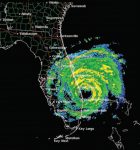
How Are We Warned About Severe Weather?
IN 1988, THE U.S. NATIONAL WEATHER SERVICE (NWS) began an aggressive program to modernize its capabilities in severe weather detection, forecasting, and communication, in support of its mission to protect life and property. As this program was implemented, weather forecasts have shown amazing improvement, particularly in severe weather advisories. The centerpiece of this modernization was […]

How Are Weather Forecasts Made?
THREE INGREDIENTS ARE NECESSARY for weather — energy, motion (both horizontal and vertical), and atmospheric moisture. The physical processes, such as energy transformations during phase changes of water (between solid, liquid, and gaseous states) are well understood, but several problems limit accurate weather forecasting. First, the equations describing the various transformations across three-dimensional space are […]

What Affects the Strength of a Tropical Cyclone?
AS A TROPICAL CYCLONE MOVES, it responds quickly to changes in the environment it encounters. In some cases, environ mental changes will cause a tropical cyclone to strengthen, perhaps becoming a hurricane or becoming a stronger hurricane. In other cases, the new environmental conditions cause a cyclone to weaken, dissipate, and eventually disappear. Considering the […]

What Is a Tropical Cyclone?
HURRICANES AND OTHER TROPICAL CYCLONES are some of nature's most impressive spectacles. These immense seasonal storms form over warm, tropical waters and can cause extremely heavy precipitation, all the while deriving energy from latent heat released by condensation and deposition. In the Atlantic and eastern Pacific, the most intense type of tropical cyclone is called […]

What Are Some Other Types of Wind Storms?
SEVERE WEATHER INCLUDES VARIOUS WIND STORMS in addition to tornadoes and cyclones. Some of these other storms — with interesting names like waterspouts, microbursts, haboobs, and derechos — can be extremely dangerous. What are their characteristics, how do they form, and where do they occur? Waterspouts A waterspout is a rotating, columnar vortex of air […]

Where and When Do Tornadoes Strike?
THE INTERIOR OF NORTH AMERICA has by far the most frequent tornado activity in the world. Tornadoes also occur, but far less frequently, in Europe, in the southeastern parts of South America and South Africa, and in a few other regions. Large parts of some continents, like all of North Africa and northern Asia, do […]

What Is a Tornado?
A TORNADO IS THE MOST INTENSE type of storm known, expressed as a column of whirling winds racing around a vortex at speeds up to hundreds of kilometers per hour. The May 1999 tornadoes in Oklahoma City, Oklahoma, were estimated to have wind speeds over 500 km/hr. Fortunately, most tornadoes are less than several hundred […]

What Causes Lightning and Thunder?
LIGHTNING IS A DANGEROUS but intriguing weather phenomenon. It results from electrical currents within a storm cloud, releasing tremendous amounts of energy that can strike the ground. In the U.S., more than 80 deaths per year are due to lightning. Although this number is much less than those killed simply by extreme heat and extreme […]
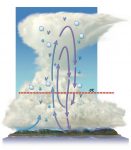
What Causes Hail?
HAIL IS A BALL OF ICE that forms under freezing temperatures within a cumulonimbus cloud and that subsequently falls toward the surface. Large hail that reaches the surface can do so at high enough speeds and with enough force to smash windows, dent cars, and destroy entire fields of crops. How does hail form, what […]
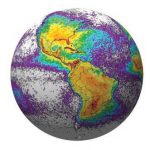
Where Are Thunderstorms Most Common?
THUNDERSTORMS CAN OCCUR as isolated single-cell thunderstorms, forming over mountains and other local features, or can be embedded in larger weather systems, like mid-latitude cyclones or multi-cell thunderstorms. By knowing how thunderstorms form, can you predict where they should be most common? How Does Thunderstorm Frequency Vary Globally? Space-based detections of lightning can be used […]
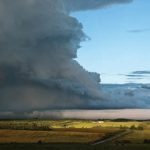
What Conditions Produce Thunderstorms?
THUNDERSTORMS ARE COLUMNS of moist, turbulent air with variable amounts of rain, strong wind, lightning, and hail. They are perhaps the most fundamental of all organized weather systems. They can provide needed rainfall for crops, but they can be accompanied by severe weather. We begin by examining the formation, growth, and decay of an individual […]

How Do Migrating Anticyclones Form and Affect North America?
ANTICYCLONES ARE ROTATING ZONES of high pressure. Most migrate across Earth's surface, guided by large-scale atmospheric circulation, but some stay or reappear in the same general area year after year. As migrating anticyclones approach, pass over, or leave an area, they cause changes in wind direction, temperature, and moisture. They are typically associated with non-stormy […]
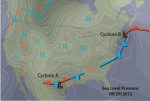
How Do Mid-Latitude Cyclones Move and Evolve?
ONCE FORMED, MID-LATITUDE CYCLONES migrate across the surface and commonly evolve through a series of steps, due to the way that winds circulate around the area of low pressure. Circulation around the cyclone will steer the trailing fronts in a counterclockwise direction (in the Northern Hemisphere), while west-to-east motion of the westerlies and Rossby waves […]

Where Do Mid-Latitude Cyclones Form and Cross North America?
WEATHER FRONTS generally do not exist in isolation, but typically form, migrate, and fade away as part of a larger system called a mid-latitude cyclone. Cold and warm fronts usually trail from a central core of low pressure — a cyclone. While popular culture uses the term “cyclone” to refer to a tornado or other […]
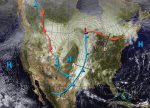
What Are Fronts?
THE NARROW ZONE separating two different air masses is called a front and is often the site of rising atmospheric motion. Whenever different air masses meet along a front, the less dense, warmer one will be pushed up over the more dense, colder one. If the rising air cools to its dew-point temperature, cloud formation […]
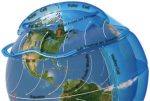
Why Does Weather Change?
THE ATMOSPHERE IS SO THIN that a single regional mass of cold or warm air can dominate the entire vertical extent of the troposphere. With time, such cold or warm air masses can expand or shrink, become colder or warmer, and can remain stationary or move great distances. In the narrow zone where the two […]
What Is Weather?
When we use the term weather, we are referring to conditions in the atmosphere at some specific time and place, whether it is right now, an hour ago, or sometime next week. Weather refers to the temperature, humidity, and windiness, and if it is fair or there is precipitation. It also refers to whether an […]
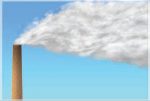
What Do Smoke Plumes Tell Us About Atmospheric Conditions?
THE INTERACTION OF MOISTURE and varying degrees of instability in the atmosphere produce clouds, fog, and precipitation. Clues about local moisture and stability characteristics can be gained simply by looking at evidence in the everyday world. Plumes of smoke or steam coming from the top of smokestacks provide such evidence. In this investigation you will […]
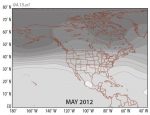
What Caused the Recent Great Plains Drought?
PARTS OF THE GREAT PLAINS, stretching from Texas to Montana, experienced severe drought in 2012, resulting in huge crop losses and other problems. These losses occurred in spite of recent technological advances, such as improved soil and water management practices and the use of drought-resistant varieties of crops. Some effects, such as crop loss, resulted […]
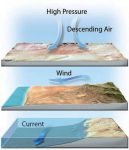
How Can Moisture Extremes Be Characterized?
THERE ARE GREAT EXTREMES in the distribution of moisture, with some regions being very dry for an extended period of time, as during a drought, whereas other regions receive huge amounts of precipitation in a short period of time. The cause of these extremes in moisture can be broad regional shifts in the climate or […]
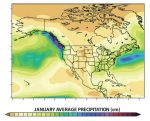
What Is the Distribution of Precipitation?
THE AMOUNT OF PRECIPITATION varies from region to region, season to season, and day to day. The daily variations are related to short-term changes in weather, but variations between regions and seasons reflect differences in the overall climatic setting, such as differences in latitude, prevailing wind directions, proximity to large water bodies, any nearby ocean […]

How Do Sleet and Freezing Rain Form?
RAIN AND SNOW ARE THE MOST COMMON forms of precipitation, but other types of precipitation are also important. The term sleet is used for a mixture of snow and rain or for precipitation as small partially frozen pellets that are too small to be called hail. Freezing rain is precipitation that reaches the ground as […]

How Does Precipitation Form?
THE PROCESS OF PRECIPITATION is vital to life on Earth, helping to redistribute water from the oceans to the atmosphere to the land. Precipitation is the ultimate source of all the fresh water on the planet, which we depend on in our daily lives. How does precipitation occur? What is going on inside clouds that […]

Where and When Is Fog Most Likely?
CERTAIN SETTINGS AND CONDITIONS are conducive to the formation of fog, so we might anticipate that some regions will have more fog than others. Also, as temperatures and humidity change with the seasons, some times of the year are likely to be foggier than other times. Considering all the places you know, which ones have […]
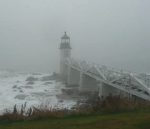
What Conditions Produce Fog?
FOG IS SIMPLY A CLOUD at ground level, so the same conditions that create a cloud also produce fog. Specifically, fog is produced by cooling of the air, by increasing the humidity of the air, or some combination, with the end result that water vapor content in the air reaches saturation. Fog forms in several […]

What Do Clouds Tell Us About Weather?
CLOUDS ARE ACCUMULATIONS of liquid water and ice suspended in the air. The types and amounts of clouds vary from place to place, from time to time, and from season to season. What are the different types of clouds, and how does each type form? Clouds provide clues not only about the amount and distribution […]
What Mechanisms Can Force Air to Rise?
AIR RISES FOR VARIOUS REASONS, some caused by differences in density between the air and its surroundings, and others a result of externally imposed factors, like a mountain. If an air parcel rises because atmospheric conditions are unstable, free convection results. If air is forced to rise due to external factors, it is called forced convection. […]
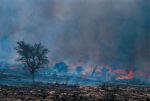
How Does the Surface Affect the Rising of Air?
EARTH'S SURFACE CONSISTS OF A VARIETY OF MATERIALS, including bare rock, soils, forests, cities, water, and ice. Each of these materials responds differently to insolation and to changes in temperature and humidity of the adjacent air. In turn, these surface materials can affect the temperature and humidity of that air. On land, these materials are […]

What Happens When Air Rises or Sinks?
THE ATMOSPHERE IS A DYNAMIC ENVIRONMENT, with upward, downward, and sideways motion. What happens to air that rises and encounters different temperatures and pressures? What happens when air sinks? The vertical motions of air cause clouds, precipitation, and many other weather phenomena. At What Rate Does an Air Parcel Cool As It Rises? To explore […]
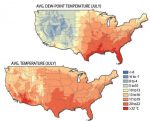
What Is the Dew Point?
ANOTHER USEFUL MEASURE OF HUMIDITY is the dew point, the temperature to which a volume of air must be cooled to become saturated with water vapor. If the air temperature is at the dew point, the air is so saturated with water vapor that vapor begins to condense as drops of liquid water, such as […]
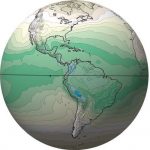
How Does Specific Humidity Vary Globally and Seasonally?
HUMIDITY OF THE AIR VARIES greatly from region to region and between different altitudes in the atmosphere. It also varies from one time to another, such as between different seasons. To compare different regions, altitudes, and seasons, we generally use specific humidity, which expresses the amount of water vapor in the air, independent of variations […]

What Is Humidity?
THE AMOUNT OF WATER VAPOR in the air is referred to as humidity. Humidity is something we can sense, affecting whether the air feels humid or dry. We are most familiar with one measure of humidity — relative humidity, a term commonly used on daily weather reports. There are other measures of humidity, some of […]

How Does Water Occur in the Atmosphere?
THE PRESENCE AND ABUNDANCE OF WATER in the atmosphere are a fundamental control of weather and climate, which both have a profound influence on our lives. The molecular structure of water causes it to have special properties that we can observe every day and that are important to life on Earth. In what forms does […]

Atmospheric Moisture
MOISTURE IN THE ATMOSPHERE, in the form of water vapor, liquid water, and ice, controls most aspects of our weather and climate. Moisture moves back and forth from Earth's surface to the atmosphere and, once in the atmosphere, is transferred vertically and laterally by moving air. Atmospheric moisture is expressed as clouds, precipitation, storms, weather […]

What Occurs During Seasonal Circulation Shifts?
GLOBAL ATMOSPHERIC CIRCULATION responds directly to insolation. As the Sun's direct rays migrate seasonally, belts of winds, such as the westerlies, migrate too. In this investigation, you will examine the general circulation of the atmosphere, as expressed by data on air pressure, wind velocity, and cloud cover for two months with very different seasons — […]
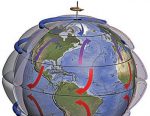
How Have Global Pressures and Winds Affected History in the North Atlantic?
INTERCONTINENTAL TRAVEL AND TRADE have relied upon moving currents in the air and oceans. Before the 20th century, when transoceanic travel and shipping relied on wind power, global winds, such as the trade winds and westerlies, dictated which directions of travel were possible at different latitudes. The directions of global winds therefore greatly influenced the […]

What Causes Monsoons?
A COMMON MISCONCEPTION is that the word “monsoon” refers to a type of rainfall, but the word actually refers to winds that reverse directions depending on the season. One of these seasonal wind directions typically brings dry conditions and the other brings wet conditions. Monsoons impact a majority of the world's population. What Are the […]

How Does Air Circulate Aloft over the Mid-Latitudes?
SURFACE WINDS IN THE MID-LATITUDES are generally from west to east in both hemispheres, but the pattern of air movement is less well developed higher in the troposphere. The main features are two currents of fastmoving air — jet streams — that encircle the globe near the boundaries of the mid-latitudes. What factors determine the […]
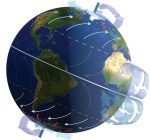
How Does Surface Air Circulate in Mid-Latitudes?
THE MID-LATITUDES are regions, in the Northern Hemisphere and Southern Hemisphere, that lie between the tropics (23.5°) and polar circles (66.5°). Air circulation in the mid-latitudes is driven by pressures set up by circulation in the adjacent tropics and polar regions, and by the Coriolis effect. Surface winds within most of the mid-atitudes blow from […]
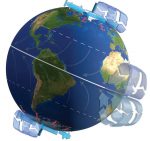
How Does Air Circulate in High Latitudes?
POLAR REGIONS RECEIVE LITTLE INSOLATION compared to the rest of Earth. As a result, the poles are very cold places, which experience winter darkness for months at a time. Air circulation around the poles reflects this relative lack of solar heating and also the proximity to the axis of rotation for the planet. The encroachment […]
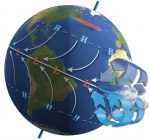
How Does Air Circulate in the Tropics?
TROPICAL CIRCULATION is driven by the intense solar heating of land and seas near the equator. The heated air rises and spreads out from the equator, setting up huge, recirculating cells of flowing air. The rising air results in a belt of tropical low pressure, and where the air descends back toward the surface is […]
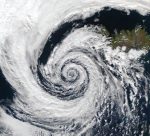
How Do the Coriolis Effect and Friction Influence Atmospheric Circulation?
THE CORIOLIS EFFECT AND FRICTION affect the patterns of air movement set in motion by pressure gradients. These phenomena influence wind direction from local scales, affecting the rotation and wind patterns of individual storms, to global scales, affecting wind patterns of the entire planet. How do pressure gradients, the Coriolis effect, and friction explain wind […]

How Does the Coriolis Effect Influence Wind Direction at Different Heights?
PRESSURE GRADIENTS INITIATE MOTION in the atmosphere, but the actual direction in which the air moves is greatly influenced by the Coriolis effect. Close to the surface, where friction with the planetary surface is greatest and wind velocities are lowest, the pressure gradient dominates. Higher in the atmosphere, winds have higher velocities and the Coriolis […]

What Is the Coriolis Effect?
THE PRESSURE-GRADIENT FORCE drives airflow in the atmosphere, but winds do not blow in exactly the direction we would predict if we only consider pressure gradients. All objects — whether air masses, ocean waters, or airplanes — moving across the surface of the Earth display an apparent deflection from the objects' intended path. The cause […]
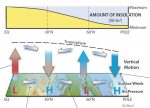
How Do Variations in Insolation Cause Global Patterns of Air Pressure and Circulation?
SEASONAL AND LATITUDINAL VARIATIONS IN INSOLATION cause regional differences in air pressure, which in turn set up regional and global systems of air circulation. These circulation patterns account for many of the characteristics of a region's climate (hot, cold, wet, dry), prevailing wind directions, and typical weather during different times of the year. Here, we […]

What Are Some Significant Regional Winds?
DIFFERENCES IN AIR PRESSURE cause a variety of regional to local wind conditions, such as those associated with storms, which are discussed in the chapter on weather. Some local winds are not so much related to weather systems as they are to differences in pressure that tend to occur at certain times of the year […]

How Do Variations in Temperature and Pressure Cause Local Atmospheric Circulation?
PRESSURE GRADIENTS INDUCE FLOW at all scales, including local and regional ones, arising from unequal heating by insolation and latent heat, by differing thermal responses of land versus sea, and even from the construction of large metropolitan areas. Such circulations contribute to the climate of a place, particularly in the absence of, or interaction with, […]

What Causes Pressure Variations and Winds?
THE MOVEMENT OF AIR IN THE ATMOSPHERE produces wind, or movement of air relative to Earth's surface. Circulation in the atmosphere is caused by pressure differences generated primarily by uneven insolation. Air flows from areas of higher pressure, where air sinks, to areas of lower pressure, where air rises. How Do We Measure the Strength […]
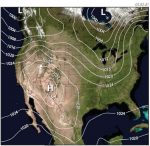
What Is Air Pressure?
PRESSURE OF GASES WITHIN THE ATMOSPHERE is highly variable, both vertically and laterally. These variations in pressure define the structure of the atmosphere and also determine the nature and direction of atmospheric motions. If one place in the atmosphere has higher pressure than another place, this imbalance of pressure (and therefore also atmospheric mass) must […]

How Do Gases Respond to Changes in Temperature and Pressure?
THE ATMOSPHERE CONSISTS LARGELY OF GASES, with lesser amounts of liquids, such as drops of water, and solids, such as dust and ice. By nature, gases expand easily or contract in volume in response to changes in temperature and pressure. Variations in temperature and resulting changes in pressure are the main drivers of motion in […]
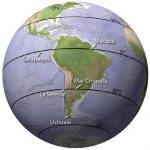
How Do We Evaluate Sites for Solar-Energy Generation?
SOLAR ENERGY IS A RENEWABLE SOURCE of light, heat, and electricity. Solar energy is typically collected with a solar panel, which can generate electricity or can heat air, water, or some other fluid. You have an opportunity to evaluate the solar-energy potential of five sites in South America, using concepts you have learned about insolation […]

How Are Variations in Insolation Expressed Between the North and South Poles?
VARIATIONS IN INSOLATION, both as a function of latitude and from season to season, help explain many aspects of our world — average temperatures, hours of daylight, type of climate and weather, the type of landscape, and the overall livability of a place. For a transect down the west coasts of the Americas, from the […]
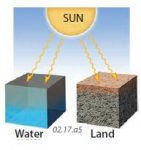
Why Do Temperatures Vary Between Oceans and Continents?
WATER EXHIBITS VERY DIFFERENT thermal properties from those displayed by the rocks and soil of land. These differences in thermal properties cause oceans and land to warm and cool at different rates, leading to significant temperature variations between oceans and land. Such differences help explain major patterns of global temperature and climate. How Do Water […]
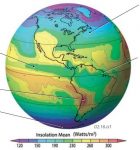
How Do Insolation and Outgoing Radiation Vary Spatially?
FLOWS OF ENERGY into and out of Earth's system vary spatially, as a function of latitude, land or sea, cloud cover, and many other factors. The pattern of insolation also changes over several timescales, from daily rotation of the planet to the longer changes in season, causing spatial and temporal imbalances — zones of surplus […]

How Does Earth Maintain an Energy Balance?
SIXTY-NINE PERCENT OF INSOLATION received at the outside of the Earth's atmosphere is available for sensible, ground, and latent heating. Ultimately all of this energy must be returned to space as longwave radiation in order to attain a balance between incoming and outgoing radiation. A greater loss to space would cool the global system, and […]
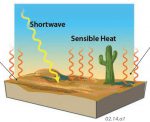
What Happens to Insolation That Reaches the Surface?
APPROXIMATELY HALF OF INSOLATION is transmitted to Earth's surface, and this energy is variably reflected, absorbed, and re-emitted. Earth absorbs energy of short wavelengths, including insolation, but re-emits it at longer wavelengths. Certain greenhouse gases in the Earth's atmosphere interact with this outgoing long-wavelength radiation, complicating the return of this energy to space and helping […]

How Much Insolation Reaches the Surface?
NOT ALL INSOLATION reaches Earth's surface. Much of it is intercepted (absorbed, scattered, or reflected) by the atmosphere. Measurements and models allow us to account for the destination of insolation globally. Approximately 69% of the energy arriving at the top of the atmosphere remains in the Earth's system, of which 20% is stored (absorbed) in […]
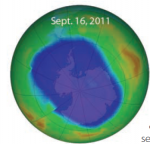
What Is Ozone and Why Is It So Important?
OZONE IS AN ESSENTIAL GAS in the atmosphere, shielding life on the surface from deadly doses of ultraviolet radiation from the Sun. In the past several decades, there has been major concern about the loss of ozone in our atmosphere, particularly a seasonal decrease in ozone above Antarctica. How can a gas that generally constitutes […]

How Does Insolation Interact with the Atmosphere?
INSOLATION REACHES THE EARTH but has to pass through the atmosphere before it reaches us. The atmosphere does not transmit all of the Sun's energy; some wavelengths of energy are partially or completely blocked by atmospheric components, such as gas molecules. The interactions between insolation and the atmosphere explain many aspects of our world, like […]

What Controls When and Where the Sun Rises and Sets?
THE SUN RISES EACH MORNING and sets each evening, but at slightly different times from day to day. Also, the Sun does not rise or set in exactly the same direction every day, although the changes from day to day are so gradual as to be unnoticeable. Over the course of several months, however, we […]

Why Do We Have Seasons?
DURING THE YEAR MOST LOCATIONS progress through different seasons, from warmer summers to cooler winters and back again. The progression from season to season accompanies changes in the position of the Sun, such as from higher in the sky during the summer to lower in the sky during the winter. Except at the equator, the […]
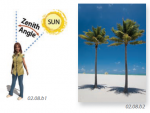
Why Does Insolation Vary from Place to Place?
DESPITE A FAIRLY CONSISTENT supply of energy from the Sun, considerable differences in the quantity of insolation are experienced between the poles and equator, and also over several timescales — most noticeably, changes between seasons and between night and day. On Earth, variations in insolation are mostly related to latitude. What Controls the Insolation Reaching […]
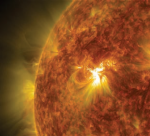
What Causes Changes in Insolation?
THE ENERGY TRANSMITTED from the Sun to Earth, called incoming solar radiation, or insolation, has varied only slightly during the short time for which we have accurate measurements from satellites. How much energy do we receive from the Sun, and why does it vary at all? How Much Energy Is Transferred from the Sun to […]

What Controls Wavelengths of Radiation?
ELECTROMAGNETIC RADIATION takes many different forms, each of which have very different properties, determined by their wavelengths. Variations in wavelength explain the existence of different colors and warming of the Earth due to climate change. How are differences in the wavelength of electromagnetic energy (EMR) expressed in our world and in the Solar System? What Range […]

What Is Electromagnetic Radiation?
ELECTROMAGNETIC RADIATION is one of the fundamental forces of nature. It dominates our daily interactions with the world, determining the color of objects, the character of the air we breathe, and the physical characteristics of the water we drink. Electromagnetic radiation is essential to the operation of weather and our climate system and to all […]
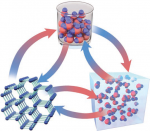
What Is Latent Heat?
WATER OCCURS IN ALL THREE PHYSICAL STATES —solid, liquid, and gas — at temperatures commonly found on Earth. Although the chemical structure of water remains unchanged from state to state, the three states, also called phases, are differentiated by the physical spacing of the water molecules. Considerable quantities of energy, contained as latent heat, are […]